#WordPress maintenance costs
Explore tagged Tumblr posts
Text
At Online Prestige Management, we demystify website maintenance costs, empowering businesses to thrive in the digital realm.
0 notes
Text
Why Regular WordPress Maintenance is Crucial for 2024 Keeping your WordPress website up-to-date is more vital than ever in 2024. Regular maintenance helps enhance security, boost performance, and ensure a seamless user experience, all contributing to improved online presence and conversion rates.
#wordpress website maintenance#wordpress website maintenance services#wordpress maintenance services#wordpress website maintenance cost
0 notes
Text
Dive into our engaging 2024 guide, "Decoding WordPress Website Maintenance Cost," for an eye-opening look at what it really takes to keep your WordPress site in top shape!
Whether you're a blog enthusiast, a small business owner, or just curious about the web world, this guide is crafted just for you. We break down everything in simple terms - from basic upkeep costs to the price of advanced features, ensuring you won't get lost in technical jargon.
For a comprehensive understanding of website maintenance costs and how to manage them efficiently, make sure to read our full blog. It's your go-to resource for making informed decisions about your WordPress site in 2024!
0 notes
Text
Decoding the Costs: Understanding WordPress Website Maintenance Expenses
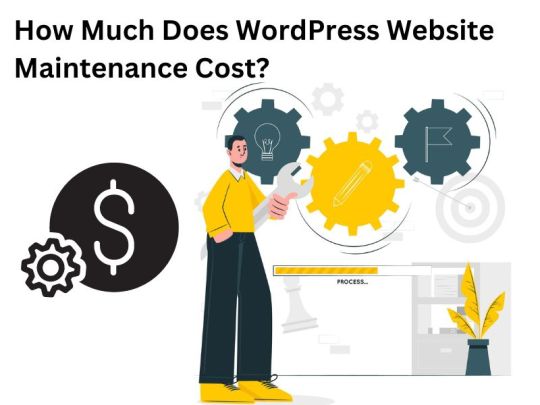
In today's digital landscape, having a well-maintained website is essential for businesses and individuals alike. Among the myriad of platforms available, WordPress remains one of the most popular choices for website development due to its versatility, ease of use, and robust features. However, building a WordPress website is just the beginning – ongoing maintenance is crucial to ensure optimal performance, security, and functionality. But how much does WordPress website maintenance really cost? In this comprehensive guide, we'll delve into the various factors that influence the cost of maintaining a WordPress website.
Introduction to WordPress Website Maintenance
Before diving into the costs, let's first understand what WordPress website maintenance entails. Maintenance encompasses a range of tasks aimed at keeping a website running smoothly, securely, and efficiently. These tasks typically include:
1. Software Updates: Regularly updating WordPress core, themes, and plugins to ensure compatibility, security patches, and new features.
2. Security Measures: Implementing security measures such as malware scanning, firewall protection, and regular backups to safeguard against potential threats.
3. Performance Optimization: Optimizing website speed, responsiveness, and overall performance to enhance user experience and search engine rankings.
4. Content Management: Adding, updating, and managing website content to keep it fresh, relevant, and engaging for visitors.
5. Technical Support: Providing technical assistance and troubleshooting issues that may arise with the website.
Now that we have a clear understanding of what WordPress website maintenance involves, let's explore the factors that influence its cost.
Factors Affecting WordPress Website Maintenance Costs
1. Scope of Services: The range of services included in a maintenance package significantly impacts its cost. Basic packages may only cover essential updates and backups, while comprehensive packages may include additional services such as security monitoring, performance optimization, content management, and technical support.
2. Frequency of Updates: The frequency of software updates and maintenance tasks can vary depending on the complexity of the website, the number of plugins and themes used, and the level of activity on the site. Websites that require frequent updates may incur higher maintenance costs.
3. Size and Complexity of the Website: The size and complexity of the website also play a role in determining maintenance costs. Larger websites with more pages, functionality, and customizations typically require more time and effort to maintain, resulting in higher costs.
4. Customization and Integration: Websites that have been heavily customized or integrated with third-party services may require additional maintenance to ensure compatibility, security, and functionality. Customizations and integrations can add complexity to the maintenance process and may incur extra costs.
5. Quality of Service Provider: The quality and reputation of the service provider offering WordPress maintenance services can also influence the cost. Established agencies with a track record of delivering high-quality services may charge higher fees compared to freelancers or less experienced providers.
6. Additional Services: Some maintenance packages may include additional services such as SEO optimization, content creation, graphic design, and digital marketing. These extra services can add value but may also increase the overall cost of maintenance.
Understanding the Cost Structure
WordPress website maintenance costs can be structured in various ways, including:
1. Monthly Retainer: Many maintenance service providers offer monthly retainer packages, where clients pay a fixed fee each month in exchange for ongoing maintenance services. The cost of the retainer typically depends on the scope of services included and the level of support provided.
2. Hourly Rate: Some service providers charge an hourly rate for maintenance services, billing clients based on the time spent on performing updates, troubleshooting issues, and providing support. Hourly rates can vary widely depending on the expertise and experience of the service provider.
3. One-Time Fee: For smaller, one-time maintenance tasks such as website audits, security checks, or performance optimizations, service providers may charge a one-time fee rather than an ongoing retainer. These fees are usually determined based on the complexity of the task and the time required to complete it.
4. Custom Pricing: In some cases, service providers may offer custom pricing based on the specific needs and requirements of the client. Custom pricing allows for greater flexibility and can be tailored to accommodate unique circumstances or additional services.
Average Costs of WordPress Website Maintenance
While the cost of WordPress website maintenance can vary widely depending on the factors mentioned above, here's a rough estimate of what you can expect to pay:
1. Basic Maintenance Package: Basic maintenance packages typically include essential updates, backups, and security measures. Prices for basic packages can range from $50 to $200 per month, depending on the scope of services and the quality of the service provider.
2. Standard Maintenance Package: Standard maintenance packages usually include a broader range of services such as performance optimization, content management, and technical support. Prices for standard packages can range from $200 to $500 per month, depending on the size and complexity of the website.
3. Premium Maintenance Package: Premium maintenance packages offer comprehensive support and additional services such as SEO optimization, content creation, and digital marketing. Prices for premium packages can range from $500 to $2000 or more per month, depending on the level of customization and integration required.
4. Hourly Rates: For maintenance tasks billed at an hourly rate, you can expect to pay anywhere from $50 to $200 per hour, depending on the expertise and experience of the service provider.
5. One-Time Fees: One-time fees for specific maintenance tasks such as website audits, security checks, or performance optimizations can range from $100 to $500 or more, depending on the complexity of the task.
Conclusion
Investing in regular maintenance for your WordPress website is essential for ensuring its longevity, security, and performance. While the cost of maintenance can vary depending on various factors, it's important to consider the value that a well-maintained website can provide in terms of user experience, search engine rankings, and overall business success. By understanding the factors that influence maintenance costs and choosing a service provider that meets your needs and budget, you can ensure that your WordPress website remains in top shape for years to come.
In conclusion, the cost of WordPress website maintenance is a worthwhile investment in the long-term success of your online presence. By understanding the factors that influence maintenance costs and choosing a service provider that meets your needs and budget, you can ensure that your WordPress website remains secure, efficient, and competitive in today's digital landscape.
0 notes
Text
0 notes
Text
Efficient Website Maintenance Services by Seoinventiv for Optimal Online Performance
Keep your website in peak condition with Seoinventiv's expert website maintenance services. From updates to security, trust us to ensure your online presence runs seamlessly.
#social media marketing agency#social media content calendar#Social media marketing packages#paid marketing channels#google pay per click expert#ppc specialist#website maintenance#website maintenance services#wordpress website maintenance services#website maintenance cost#cost of website maintenance
0 notes
Text
Shopify has a blog problem, this creates a really simple and straightforward opportunity for freelance designers/programmers
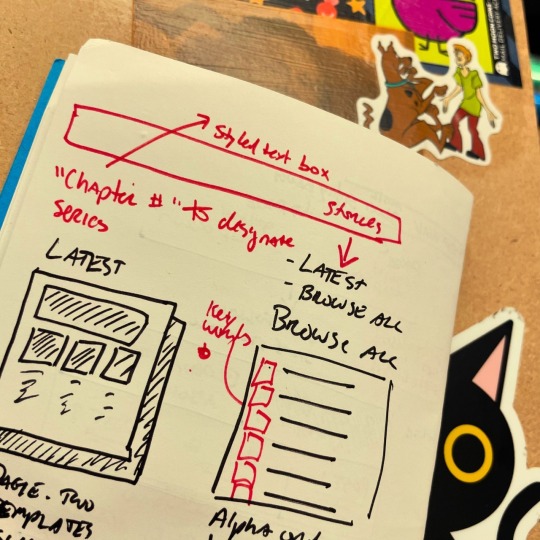
Earlier this year I settled the editorial decisions I needed for a lot of blogging going forward, and recently I've experimented (repeatedly) with the idea of having a blog on a separate platform, or using Shopify's system.
Having two sites would allow me to blog on a WordPress site, but creates... two sites, therefore complicates everything more. More maintenance, design, etc. etc.
I am actively seeking to make my life easier so I am foregoing two sites and learning to live with the limitations.
A personal struggle to the surprise of no one.

You can use WordPress and thread Shopify through it via the "buy" button, which is a shortcut for small stores and/or larger stores where you are very comfortable in WordPress.
You cannot use Shopify and thread WordPress through it.
Which is a shame.
Because Shopify's native blog platform is fucking horrible.

An independent graphic designer who can program, or a programmer who can design, cannot solve Shopify's problems.
They are inherent to the system and likely built on legacy code Shopify doesn't want to update because it'll cost a fortune.
I'll just be mad about this until the market forces them to address this opportunity and they revamp their blogging platform. That's fine.
Or maybe decades will pass and they won't. That's... fine too. I guess.

I am rambling this out because if I were in the business of freelance graphic design and/or programming I would jump on this immediately. I used to be and always shared opportunities with friends and it was fun and I kinda miss that aspect of the life.
I'm not in that business, and I have in-house programming, please don't pitch me, but do consider pitching... pretty much everyone with a Shopify site and a blog as Phase 01 of your plan, and everyone who has a Shopify site and does not have a blog as Phase 02 of your plan.
Here is what I would tackle:
Shopify blogs have two structures: "blog" and "blog post".
A blog in Shopify is essentially a category in WordPress, with more limitations, such as, a blog post can only be in a single "blog". That sucks but it means your life as a designer/developer gets more interesting.
Most Shopify themes come out of the box with 1 "blog" and 1 "blog post" template. They are exceptionally simple, usually. I would build a few test templates and offer them to clients "these will be modified to fit your direct style."
For some reason -- I'm guessing focus -- most blogs in Shopify have the image on top. If you structure "image on the left, image on the right" as options you can offer clients, you've just tripled their layout capabilities.
For another reason, I don't know why, but almost all shopify blog post templates I've seen do not have sidebars. Which is insane?! You can control that from the fucking "blog post" template so it would be an easy win.
You could work around the "a post can only be in one blog on Shopify" issue by having a sidebar that pulls the latest 3 (or 5 or whatever) posts as links for other blogs on the site: TEST SITE has 3 blogs. When you're looking at a post on BLOG 01, in the sidebar, you see a link to the latest post on BLOG 02 and BLOG 03. Similarly, when you're looking at a post on BLOG 02, the sidebar has the latest post from BLOG 01 and BLOG 03 (and so on)
The template I use, off the shelf, uses the Shopify's user name and details for the author of the blog. Once a blog post is created, in Shopify, you cannot alter the author. This is dumb as fucking rock salt on slug popcorn. But, again, systematic, I'm pitching ideas on ways around it -- exclude this and just use a CUSTOM DATA field to allow the Shopify owner to pick the relevant author. This cuts down on the need for extra Shopify users, tremendously, and builds in the opportunity for WordPress-style author footers on blog posts.
Emulate the very common filtering on products -- dropdowns, sorting mechanisms -- with tags on a sidebar on BLOG templates. This will be tricky because you cannot hook into the Search & Discovery function, but it's absolutely no where near impossible. And would be amazingly useful.

Overall Shopify is a decent platform with significant advantages.
There blogger apps but holy shit that is so unnecessary. If they were a one-time-fee, it would be fine, but they aren't, they're generally $20+/month.
I'm not interested in paying for a service that ties me into another tech system that I am fucked if they go out of business, jack up their prices, introduce a feature I don't like, or remove a feature I do like.
For something like a blog system.
Which relies HEAVILY on very structured, single-built, near-infinitely-reused templates.

A low effort, high yield opportunity exists for independent designer/programmers to come up with a suite of designs and say "hey with some very simple modifications, we can take 1 of the following, apply it to your store, and dramatically increase your in-site blogging opportunities."
You start with a base "blog post" template and a base "blog" template and then every time someone hires you to add a feature to theirs, using Shopify's core tech -- you're just applying paint -- you now have a second set of templates.
Recycle forward.
One time fee per client -- likely low, but again effort is low since 90% of the code is re-used -- and each time you secure a client, you have opened a networking door.

Just make sure you include instructions and/or a premium service for when the customer upgrades their theme version -- "occasionally your theme author will upgrade, and this may get lost... so do the following to bring it back and/or we'll handle it for you for $X and Y-days notice."
Business opportunities are everywhere.
Good luck!
I repeat don't add me to your pitch list, I have a programmer in-house, but use this idea to make a business or extend yours!
This isn't financial advice, it is annoyed rambling!
#shopify#small ecommerce#small business#web design#ecommerce design#blogging#shopify blogging#graphic design#blog design
21 notes
·
View notes
Text

20 Reasons Why Do you create website using WordPress CMS?
Hire: https://fiverr.com/s/e6LKqzk
Portfolio: http://wasimakram.dev
Reasons to Use WordPress CMS:
User-Friendly Interface
Easy to learn and manage, even for non-technical users.
Customizability
Thousands of themes and plugins allow for extensive customization.
SEO-Friendly
Built-in SEO features and plugins like Yoast SEO make optimization easier.
Responsive Design
Most WordPress themes are mobile-friendly and responsive.
Cost-Effective
Offers free and paid themes and plugins, catering to different budgets.
Flexibility
Suitable for any type of website: blogs, portfolios, e-commerce, forums, etc.
E-Commerce Capabilities
Easily integrates with WooCommerce for building online stores.
Community Support
Large, active community of developers and users for troubleshooting.
Regular Updates
Frequent updates ensure security and feature enhancements.
Multilingual Support
Allows for easy creation of multilingual websites through plugins like WPML.
Content Management
Simplifies the process of creating, editing, and organizing content.
Security Features
Numerous plugins and best practices help enhance website security.
Scalability
Can handle both small blogs and large-scale websites with high traffic.
Third-Party Integrations
Compatible with various tools like CRMs, analytics, and marketing platforms.
Open Source
Free and open-source, giving developers full control over the codebase.
Time Efficiency
Ready-to-use themes and plugins reduce development time.
Multimedia Handling
Supports various media types, including images, videos, and audio files.
Custom Post Types
Ability to create and manage custom content types beyond posts and pages.
Easy Maintenance
Intuitive dashboard and automation tools make website maintenance simple.
Integration with Social Media
Easily integrates with social platforms to enhance engagement.
2 notes
·
View notes
Text
How To Integrate Dropbox with LMS Integrations
Integrating Dropbox with your LMS could change how you manage courses, assignments, and projects. Bring Dropbox to the course, assignment, and project management of your LMS Integrations. Dropbox can make those file storage, sharing and collaboration made Easy.
Provided that you can establish a predictable level of payments, it is both user friendly and has plenty of great features, which make it appealing for LMS Integrations. Using Dropbox makes the learning experience even better when paired with an LMS. It’s a connector that links cloud storage with the LMS platform. It’s faster for file management, collaboration, and accessing materials.
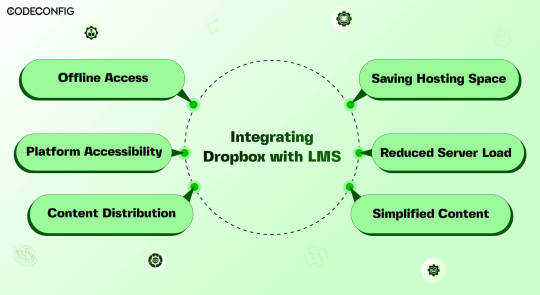
Dropbox integration with a Learning Management System (LMS) opens the doors for Instructure, teachers, and students all at once file management is made easier, collaboration becomes more accessible. By connecting Dropbox to your LMS, you can simply upload everything into one place in one Dropbox folder and they don’t have to worry about multiple uploads or complex settings.
A direct Dropbox to the LMS secures this folder so LMS integrations can get to what they need without struggling. Dropbox also lets students with poor internet offline downloads. Using Dropbox also helps handling large storage as your needs. It saves server costs and keeps things from being overcrowded. During busy times, the integration provides a load off LMS servers.
Also Read: 7 Best Dropbox Plugins for WordPress for 2024
Saving Hosting Space
Integrating Dropbox with your LMS saves space and costs. Traditional LMSs, especially those with video, multimedia, or large datasets, quickly run out of space. Dropbox allows you to store these resources in the cloud. You can access them anytime via its website or app. This not only frees up space but also taps into Dropbox’s strong, scalable infrastructure. It cuts costs on storage hardware, maintenance, and support. As courses and resources grow, so do storage needs.
Reduced Server Load
Dropbox with an LMS, it can reduce load on their servers significantly. Dropbox utilizes cutting edge load balancing techniques to ensure good performance from its servers. Dropbox making user requests faster, thus providing better user access times and overall performance when users are accessing course material. LMS runs better by leveraging Dropbox’s infrastructure, but an LMS also offers a more reliable and scalable delivery of educational content.
Effortless Content Distribution
Integrating Dropbox with your LMS simplifies content sharing. Instructors can easily upload notes, presentations, readings, and videos to Dropbox. These then become accessible in the LMS, using the same interface students are familiar with. Instructors only update files in Dropbox it show up in the LMS instantly. This saves time for instructors and keeps things organized for students. Students no longer switch between platforms or versions.
Cross-Platform Accessibility
Linking Dropbox with your LMS boosts its accessibility across devices. Dropbox functions smoothly on Windows, macOS, iOS, Android, and all web browsers. This allows students and teachers to reach materials on any device. Students often switch devices phones, working on laptops, or looking at tablets. Students can quickly find readings or notes anywhere, enhancing learning and productivity. It supports various learning styles, letting students engage with lms content in their preferred way.
Offline Access to Course Materials
Accessing course materials offline greatly helps students with poor internet. They can use Dropbox with an LMS to sync files for offline access. This is particularly beneficial for commuters and those in areas with bad connectivity. It allows studying anywhere, as long as there’s power. With a good internet connection, students download everything. This flexibility increases involvement and improves retention of the studying.
Simplified Content Updates
Effective learning needs up-to-date content. Dropbox and LMS integration makes this simple. When instructors update a file in Dropbox, all media files sync automatically on lms platform. Students always access the latest materials without extra effort. Instructors can update lecture slides, add course, or change assignment instructions in real-time. So, students always see the most current information. This process is straightforward thanks to dropbox smart file sync.
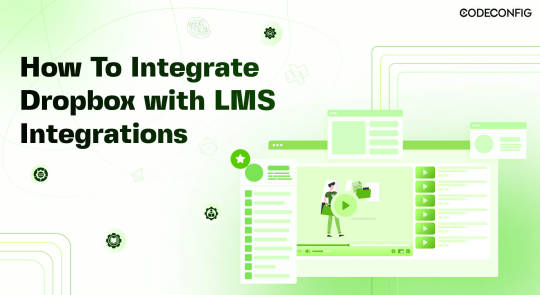
LMS Integrations together with Integrate Dropbox can help you to build a full fledged e-learning platform or simply add an e-learning part to your business or personal brand. In order to actually optimize your learning platform, you may want to combine your LMS plugin with Integrate Dropbox best free dropbox plugin for WordPress. This powerful plugin frees up server space and ultimately provides a better performance for your site.
Embedding Dropbox documents, videos, and other media files smoothly in your inserts seamlessly into widely used LMS platforms like Tutor LMS and Master LMS and simply coexists from your WordPress dashboard to share and manage files with ease Integrate Dropbox plugin easily . These make it easy to create, manage and customize your own online courses right within the WordPress dashboard.
Step 1: Install and Configure the Integrate Dropbox with LMS Integrations
Install the Dropbox Plugin: Search Integrate Dropbox and activate
Connect Dropbox Account: Check the Official Website Documentation to connect
Step 2: Adding Dropbox Video to a Course Lesson in MasterStudy LMS
Navigate to MasterStudy LMS: Go to your WordPress dashboard and navigate to MS LMS > Courses. Edit OR add new the course to which you want to add the video.

Edit or Add a Lesson: Scroll down to the Curriculum section and either edit an existing lesson or create a new lesson. – First Create / Add Video Lesson > Click on the Save

Select Video Type as External: When editing the lesson, scroll to the Lesson Type section. From the dropdown, choose Video as the lesson type.

Select Video and Video Poster from the Popup:
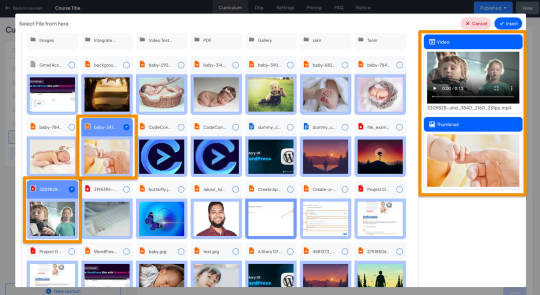
Auto Save the Lesson:
Once the Dropbox video and Poster are added, It will automatically be saved, and make sure the fields are filled.

Step 3: Test the Lesson Video
Now, it’s time to preview the course video lesson.

Wrapping up
Dropbox is used as a Learning Management System benefits for both instructors an d students can be got whenever . And this integration drives such a deal of the pain points we encounter in these digital learning environments, such as improved file management and collaboration, improved accessibility, and greater security. The strengths of both the platforms are combined and allowed educational institutions to build a stronger and more robust, flexible and more engaging learning ecosystem capable of meeting the future needs of modern education.
#WordPressPlugin#DropboxIntegration#LMSPlugin#WordPressLMS#DropboxForEducation#eLearningIntegration#WordPressDevelopment#OnlineLearningTools#EdTechSolutions#LMSIntegration#wordpress#dropbox
2 notes
·
View notes
Text
web design agency in ghaziabad
Welcome to Your Premier Web Design Agency in Ghaziabad
Welcome to Web Players Technology, Ghaziabad's leading Web Design Agency in Ghaziabad. Our mission is simple: to help businesses like yours thrive in the digital age. Whether you're a startup aiming to make your mark or an established company looking to revamp your online presence, we're here to turn your vision into a reality. With a passion for design and a commitment to excellence, we deliver tailored web solutions that drive results.
Who We Are
At Web Players Technology, we pride ourselves on being a team of creative professionals who blend innovation with strategy. Based in the heart of Ghaziabad, our agency is at the forefront of web design, development, and digital marketing. Our talented team includes:
Web Designers: Artists who transform ideas into visually stunning and user-friendly websites.
Developers: Tech experts who bring designs to life with clean, efficient code and cutting-edge technology.
Digital Marketers: Strategists who ensure your website attracts the right audience and converts visitors into customers.
Project Managers: Coordinators who ensure your project is completed on time, within budget, and to your satisfaction.
Our Services
We offer a comprehensive range of web design and development services tailored to meet the diverse needs of our clients. Our services include:
1. Custom Web Design
A website is often the first impression customers have of your business. Our custom web design services ensure that your site is not only visually appealing but also reflects your brand's identity. We focus on:
Unique Design Concepts: No two businesses are the same, and neither are our designs. We create unique layouts that stand out.
Responsive Design: Your website will look and function flawlessly on all devices, from desktops to smartphones.
User Experience (UX): We design with your users in mind, ensuring a seamless and intuitive navigation experience.
2. Web Development
Behind every great website is robust development. Our development services include:
Front-End Development: We use the latest technologies to ensure your website looks great and functions perfectly.
Back-End Development: Our developers create reliable and scalable back-end solutions to support your website’s functionality.
Content Management Systems (CMS): We build websites on popular CMS platforms like WordPress, Joomla, and Drupal, allowing you to manage your content easily.
3. E-Commerce Solutions
In today’s digital marketplace, having a strong e-commerce presence is crucial. Our e-commerce solutions include:
Custom E-Commerce Design: Tailored designs that make shopping easy and enjoyable for your customers.
Shopping Cart Integration: Smooth and secure payment processes that enhance user experience.
Product Management: Tools to help you manage inventory, track sales, and analyze performance.
4. Search Engine Optimization (SEO)
A beautiful website is only effective if people can find it. Our SEO services ensure that your site ranks well on search engines and attracts organic traffic. We offer:
On-Page SEO: Optimization of website content, meta tags, and images to improve search engine visibility.
Off-Page SEO: Strategies to build backlinks and increase your site’s authority.
Local SEO: Techniques to enhance your visibility in local search results, crucial for businesses in Ghaziabad and the surrounding areas.
5. Digital Marketing
To complement our web design services, we offer a range of digital marketing solutions designed to drive traffic and generate leads:
Social Media Marketing: Engaging strategies to build your brand’s presence on platforms like Facebook, Instagram, and LinkedIn.
Email Marketing: Targeted campaigns that nurture leads and keep your audience informed.
Pay-Per-Click Advertising (PPC): Cost-effective advertising that delivers immediate results and drives qualified traffic to your site.
6. Website Maintenance and Support
A website requires ongoing maintenance to stay relevant and secure. Our support services include:
Regular Updates: Keeping your website’s software and plugins up-to-date to prevent vulnerabilities.
Bug Fixes: Quick resolution of any issues that may arise to ensure smooth operation.
Performance Monitoring: Regular checks to ensure your website is performing optimally and efficiently.
Why Choose Us?
Choosing the right Web Design Agency in Ghaziabad is a crucial decision for your business. Here’s why Web Players Technology stands out:
1. Experience and Expertise
With years of experience in the industry, our team has successfully delivered projects across various sectors. We stay updated with the latest trends and technologies to provide innovative solutions.
2. Client-Centric Approach
Your satisfaction is our top priority. We work closely with you throughout the project to ensure your needs are met and your expectations are exceeded.
3. Quality and Reliability
We are committed to delivering high-quality work on time and within budget. Our attention to detail and dedication to excellence ensure that you receive a product you can be proud of.
4. Transparent Communication
We believe in clear and open communication. You’ll be kept informed at every stage of the project, and we’re always available to address any questions or concerns.
5. Competitive Pricing
Our pricing is designed to be fair and transparent, offering exceptional value for the quality of work we deliver. We provide detailed quotes and ensure there are no hidden costs.
Our Process
Our approach to web design and development is structured to ensure a smooth and successful project. Here’s how we work:
1. Discovery and Planning
We start by understanding your business, goals, and target audience. This phase involves gathering requirements and defining the scope of the project.
2. Design and Prototyping
Our designers create mockups and prototypes to visualize the Web Design Agency in Ghaziabad. You’ll have the opportunity to provide feedback and make adjustments before we move on to development.
3. Development
Once the design is approved, our developers bring it to life. We build your website using the latest technologies and ensure it meets all functional requirements.
4. Testing and Launch
Before launching, we thoroughly test the website to identify and fix any issues. We ensure that everything works seamlessly across different devices and browsers.
5. Post-Launch Support
After the launch, we provide ongoing support to address any issues and help you with any adjustments or updates. We also offer training to help you manage your website effectively.
Get in Touch
Web Design Agency in Ghaziabad
Ready to take your online presence to the next level? Contact us today to discuss your project and find out how we can help. Whether you’re looking for a stunning new website, a powerful e-commerce platform, or a comprehensive digital marketing strategy, Web Players Technology is here to assist.
#web design agency in ghaziabad#web design agency#web design#website design#website development#web development
2 notes
·
View notes
Text
Discover the essential factors influencing website maintenance costs. Learn about the importance of regular updates, typical expenses, and what you should budget for maintaining a WordPress site.
0 notes
Text
10 Benefits of WordPress Plugin Development
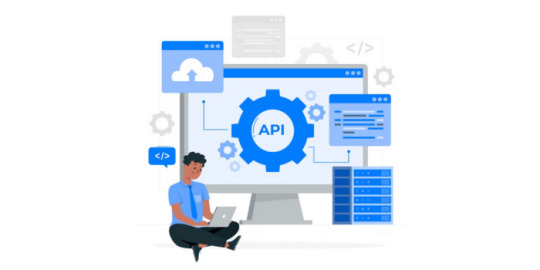
Custom WordPress plugin development offers several advantages that cater to various needs and preferences.
Here are some benefits:
Tailored Functionality:
Custom WordPress plugins are crafted specifically to meet your unique requirements, whether it's advanced e-commerce features, membership management, or custom content display. This ensures your website functions precisely as you envision.
Scalability:
As your website expands, custom plugins can grow alongside it. You can add new features and functionalities without being constrained by pre-built solutions, accommodating the evolving needs of your business.
Optimized Performance:
Custom plugins are developed with your website's performance in mind, eliminating unnecessary code and integrating only the features you need. This can improve loading times and overall site performance, enhancing the user experience.
Enhanced Security:
Using custom plugins allows for full control over the codebase, making it easier to implement robust security measures and protect your website from potential threats arising from third-party plugins with unknown code quality.
Seamless Integration:
Custom plugins can be seamlessly integrated with other tools and systems you use for your business operations, ensuring smooth interactions and data flow between different components of your digital ecosystem.
Unique Branding:
Incorporating your brand identity seamlessly into your website's functionalities fosters stronger brand recognition and loyalty among your audience, ensuring consistency with your brand's aesthetics and messaging.
Ownership and Control:
Commissioning a custom plugin grants you full ownership of the code, enabling autonomy over its maintenance, updates, and future development without dependence on third-party developers or licensing restrictions.
Long-term Cost Efficiency:
While the initial investment in custom plugin development may be higher, it proves cost-effective in the long run by reducing unnecessary expenditures on additional features or functionalities you don't require.
Support and Maintenance:
Custom plugin developers typically offer ongoing support and maintenance services, ensuring compatibility with the latest WordPress updates and addressing any issues that may arise over time.
Competitive Advantage:
Leveraging custom plugins to create a unique online experience for your audience can differentiate your website from competitors, attracting more visitors and driving business growth through added value and streamlined user interactions.
Summary
Custom WordPress plugin development offers numerous benefits, including tailored functionality, scalability, optimized performance, enhanced security, seamless integration, unique branding, ownership and control, long-term cost efficiency, support and maintenance, and a competitive advantage.
2 notes
·
View notes
Text
Discover the Benefits of Quotes for Solar Panels
Learn how quotes for solar panels can save you money and help the environment. Discover the benefits, types, costs, installation process, and maintenance requirements of solar panels.https://ifttt.com/images/no_image_card.png https://www.solvingsolar.com/quotes-for-solar-panels/
View On WordPress
#Assistant Professor#Computer Science#computer scientist#Engineering#experimental roboticist#human-robot#Research Laboratory#research scientist#robotics research#University of Denver
4 notes
·
View notes
Text
Benefits of WordPress Use in Digital Marketing
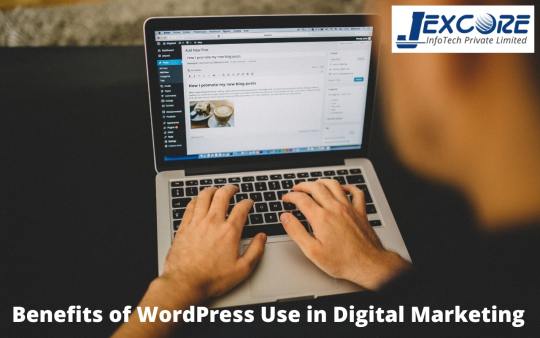
WordPress is widely regarded as the best CMS (Content Management System). It is free and open-source. WordPress is a great tool if you want to create a website but don’t know how to code. WordPress makes it easy to create any kind of website.
Do you have concerns about how successfully a content management system can help you connect with customers if you plan to engage in digital marketing for your business? Then WordPress is the solution.
Here, some benefits of using WordPress for digital marketing are listed.
Without charge
The fact that WordPress is free is one of its most notable and obvious benefits. Although there are costs associated with using WordPress, anyone may create a substitute WordPress website for free. Themes may include the desire to develop positioning for free or for a fee. Additionally, the majority of free plugins have sufficient functionality to improve performance.
Smooth update and preservation
WordPress may be a perfect CMS that anyone can use. We frequently have customers who would want to have control over their websites so they could submit updates from their businesses and edit information as needed. WordPress makes it simple for them to try and achieve this. You don’t need to know any coding to update or add new content, and it is simple to choose and understand.
WordPress gives us a great option to give to our customers because it doesn’t discourage them from using their websites and allows them to do so if they find a match. Additionally, you can arrange security updates and maintenance updates to run automatically so that you know your website is always protected and up to date with technology.
Modification and Personalization
WordPress has more than 500,000 free plugins, so chances are there is one available to help you if your website needs to accomplish something it is now unable to do. Whether you want to integrate PDFs or add a different feature, like a landing page. The solution is WordPress plugins, which make it possible for you to continuously change or adjust your site’s capabilities to meet your specific needs. No need to code once more.
Fashionable for blogging
Actually, becoming a blogging platform, WordPress. You’ll judge WordPress whether your company is obsessively hooked to content and digital marketing. You may also use it to implement a solid content strategy.
WordPress is one of the most popular free blogging platforms, allowing you to build a beautiful journal page and update it as frequently as you wish. It is simple to optimise journal posts for both readers and search engines using the CMS. In addition to supporting blogs, WordPress also makes it simple for you to edit and modify them.
Ability to collaborate
The enormous WordPress community has made sharing simpler than ever. You have social media widgets, APIs, plugins, and everything else you need to connect your website to your social media accounts and share your content across many platforms.
Jexcore Infotech is specialize in building high-performance websites on WordPress that are ROI-driven websites. Our websites deliver not just a competitive fast performance, but also security and easy navigation. Our websites and solutions based on WordPress are scalable, have high functionality, and have pleasant themes.
Our websites have flexible and custom designs, and the ability to meet the newest demands of the evolving business environment. Contact us today for website development and Digital marketing work.
#digitalmarketing#smallbusinessgrowth#SEO#seoservices#seoexpert#socialmediamarketing#marketing#contentstrategy#branding#onlinemarketing#marketingstrategy#marketingdigital#marketingagency#marketingservices#jexcore
12 notes
·
View notes
Text
#website maintenance feature#WordPress website maintenance cost#website maintenance service companies
0 notes
Text
# atty rambles about wordpress
this is a tag I am creating because I am chewing hard on this bone and it is a weird stress reliever
as is this blog in general

SHOPIFY BLOG VERSUS WORDPRESS STORE
WordPress Store
WordPress can host (reasonably well) an ecommerce store. Via WooCommerce (their main system), Shopify's "here is a button" system, and/or countless other things.
WordPress does blogging very, very, very effectively at a very, very low cost. Pick a host, press a few buttons, you have a wordpress blog. Depending on the host, but for almost all of them, 99.9% of your maintenance will be handled for you.
The issue is less "an issue" and more "reality" in that a WordPress store is not a store, and so between 50% - 95% of the "store mechanics" are not in the box -- they have to be built, designed, written, maintained.
"Thank you for your order!" pages -- etc. there are ten billion tiny gears to a shop -- all have to be built. Maintained. Etc.

Shopify Blog
Shopify can handle the store mechanics very well. If your needs are specific and/or huge, you'll probably struggle, but to be blunt, at that level you are a medium-sized business (my opinion) and should be looking into a more bespoke system anyway. Either using Shopify as a backbone and/or something unique.
I am explicitly talking about thousands of products and hundreds of thousands of dollars in sales.
If you are not at that level, it (probably) can do everything (almost everything) you need it to do for somewhere between a few hundred and several hundred dollars very well-to-extremely-well.
Except. Blogging.
There is a limit of authors to users on your account, you cannot easily access or sort backend metadata (but you can create it, I say, interestingly enough, I say, angerily).
Tags, no categories, also difficult to sort.
Your ability to sort tags is brutally elementary. As is designing specific templates (tags, author, etc.)
It is an extremely weak system.

I think this is one of the reasons why art shops tend to be... difficult... to build and maintain.
Before there was social media (fuck I'm getting gray) there were blogs and webrings -- these still exist of course but not nearly in scope or scale.
Social media is "blog, public, in a forum" -- so it allows art shops etc. to replace / augment (let's be honest... replace) blogging, which has allowed ecommerce platforms the ability to ignore blogging as a platform to construct and flesh out.

My suggestion is WordPress (or someone else) replace Shopify's blogging system with a native structure
I would be willing to pay a huge chunk of cash for this. I hate Shopify's blogging system, it is so weak. I do not want to maintain a billion things on my own, so I am not interested in using blog-shop-structure.
I am fleshing out the Post's blog on Shopify's system anyway because it is the best possible of uncomfortable choices.
I am aware of all of the Shopify blogging apps. They are paint on a house that needs to be rebuilt.
5 notes
·
View notes